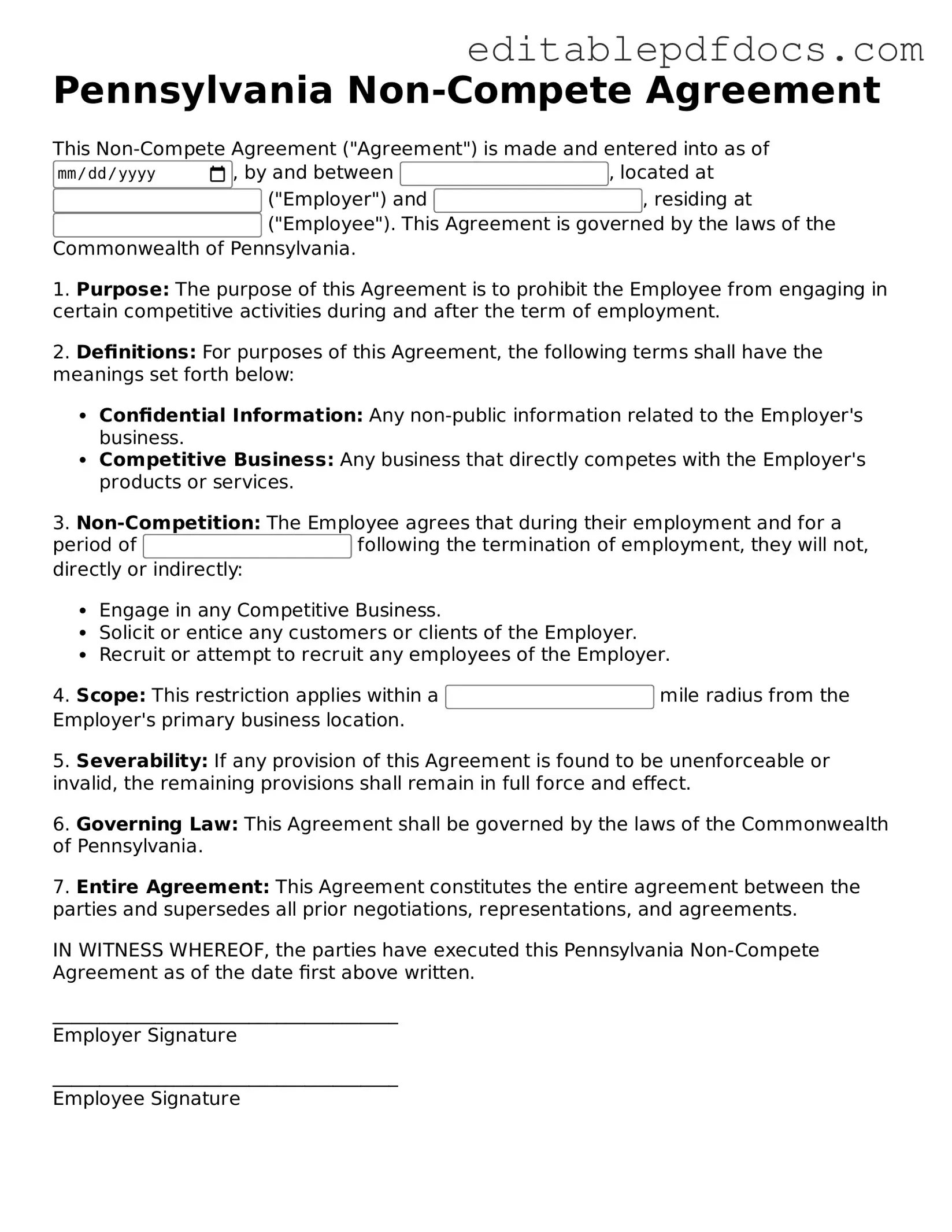Non-compete Agreement Document for Pennsylvania
A Pennsylvania Non-compete Agreement form is a legal document that outlines the restrictions placed on an employee regarding their ability to work for competitors after leaving a job. This form is designed to protect a business's interests by preventing former employees from sharing sensitive information or using their skills to benefit a competing company. If you need to fill out this form, please click the button below.
Open Editor Now
